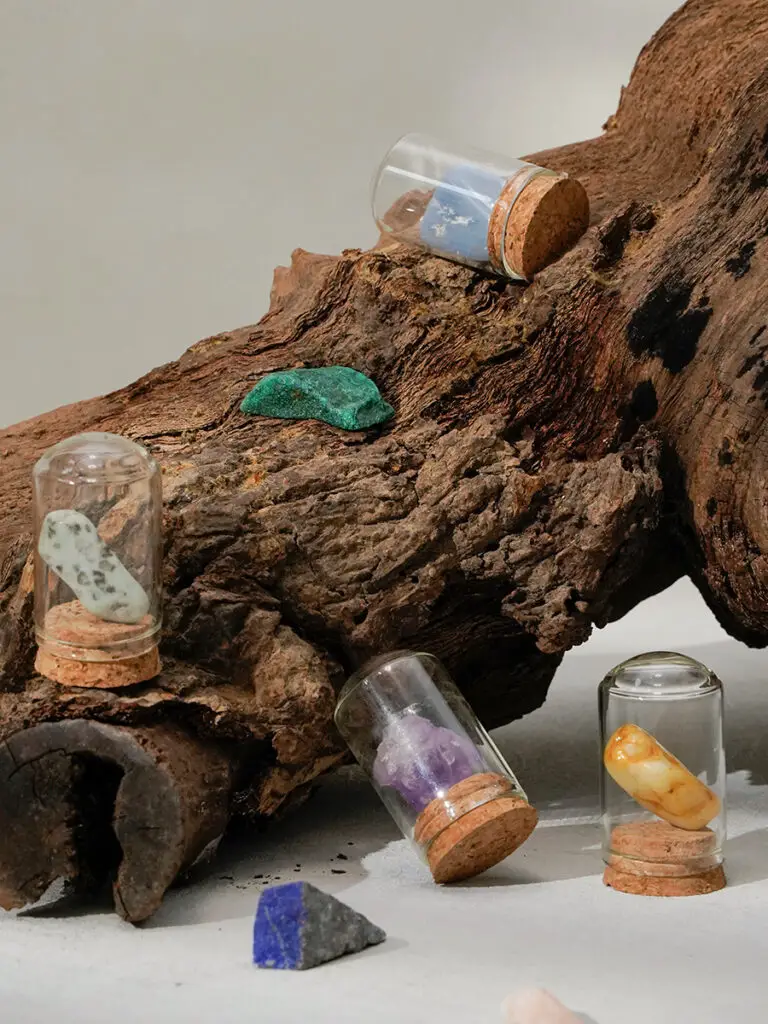When you think of crystals, quartz is probably the first one that comes to mind. With its six-sided pointed terminations and gleaming facets, quartz is the poster child for crystals everywhere.
But even though it’s ubiquitous, many people wonder – is quartz actually rare? Or is it one of the more common crystalline minerals on Earth?
As it turns out, quartz is one of the most abundant minerals in the continental crust. It can be found all over the world in a variety of geological settings. In fact, Quartz makes up about 12 percent of the land surface and about 20 percent of the Earth’s crust by volume!
So while beautiful quartz specimens can certainly be valuable to collectors, overall quartz is not considered a rare or precious material.
Let’s take a little deeper look at why quartz is so widespread, and what types of quartz you might stumble across out in the wild.
The Science Behind Quartz’s Abundance
Geologically speaking, quartz is considered a common, rock-forming mineral. This means that quartz is one of the essential minerals that get mingled together to form igneous, metamorphic, and sedimentary rocks. Quartz tends to make up a significant portion of felsic rocks like granite.
Chemically, quartz is silicon dioxide (SiO2). It’s composed of one atom of silicon bound to two atoms of oxygen.
This simple chemical structure allows quartz to form easily under many different temperature and pressure conditions. Anywhere high silica magma or sediment is present, quartz is likely to crystallize.
Additionally, once quartz comes into existence, it’s very chemically stable and hard to break down. It persists over long geological timescales rather than dissolving or decomposing like other minerals.
This resistance to weathering allows any quartz that forms to accumulate steadily in the crust over millions and billions of years.

Different Settings Where Quartz Appears
Now that we know why quartz is so abundant, let’s survey some of the different places we can find it:
Granite Pegmatites
Granite pegmatites are zones of very coarse-grained granite rocks that form as water-rich magma intrudes into cracks and slowly cools. The huge crystals of minerals like quartz, feldspar, and mica grow into impressive formations. Some exceptional quartz crystals over 10 feet long have come from pegmatites!
Hydrothermal Veins
Hydrothermal solutions flowing through fractured rocks deposit dissolved minerals into the cracks as they cool. This forms vein-like bodies of crystalline material – often with nicely faceted quartz crystals lining the insides of the veins. The crystals can form slowly over periods of 300-400°C.
Sedimentary Deposits
As quartz crystals weather out of granite and get transported downstream by rivers, they accumulate with other sediments to form beach sands, sandstone, and conglomerate rock deposits. Quartz makes up a high percentage of most sand. Those white sandy beaches? Largely weathered and eroded quartz crystals!
Quartzites
Metamorphism can recrystallize loose quartz sand into an interlocking crystalline structure known as quartzite. These hard metamorphic rocks contain over 95% quartz and are found in mountain belts marking ancient shorelines.
Mineral Veins
Quartz is an excellent host mineral for elements like gold, silver, copper, and other ore minerals. Hydrothermal solutions transport these elements and redeposit them in quartz vein formations that can be mined.
So in summary – quartz can form directly from cooling magmas, get redeposited through sedimentary processes, or get metamorphosed into quartzite. There are ample opportunities for quartz to crystallize across various rock settings.
A Closer Look at Quartz Varieties
While pure quartz is silicon dioxide, various impurities can get incorporated into the crystal structure. These trace elements impart different colors and properties to the quartz. Let’s look at some of the many quartz varieties that exist:
Rock Crystal
Rock crystal is the purest form of quartz – exhibiting no impurities or inclusions. It’s essentially colorless and transparent. The name comes from the Ancient Greek term for clear ice.
Amethyst
Trace amounts of iron within the crystal structure give amethyst its lovely purple hue. This variety used to be the most valued form of quartz. Darker, richer purple colors are the most sought after by collectors.
Citrine
Citrine forms when iron impurities undergo irradiation and take on a yellow to orange color. It’s a bright, sunny, and popular form of quartz. Most citrine on the market has actually been heat treated rather than naturally forming.
Smoky Quartz
Smoky quartz gets its deeper brownish-gray color from natural radiation exposure over long periods of time. Crystals can form with a very gradual color gradient starting clear on one end and getting darker towards the tip. Nice.
Rose Quartz
The delicate pink in rose quartz associated with pink fibers in quartz, these pink fibers are a borosilicate with characteristics similar to dumortierite, known as diddumortierite. The rosy hue can range from very pale to more vibrant pinks.
Milky Quartz
Milky quartz is cloudy and translucent rather than fully transparent. This effect comes from microscopic fluid inclusions or tiny gas bubbles that were trapped in the crystal as it formed.
Rutilated Quartz
Slender golden needles of the mineral rutile run through some quartz crystals, creating beautiful patterns and auras within the stone. It’s a popular collector’s piece.
There are actually dozens more varieties of quartz depending on coloring agents, inclusion patterns, or radiation exposure. While chemically similar, the different types can be strikingly diverse in appearance.

Hunting for Quartz in the Wild
Now you know why quartz is so abundant geologically. And you’re armed with some knowledge about different quartz types to look for. This opens up the fun world of quartz hunting!
Outcrops of granite, pegmatite, and quartzite are great places to start your search. Use a rock hammer to split open promising rocks and see if any crystalline faces are revealed inside. Streams, rivers, and beaches also accumulate quartz fragments you can sift through. Just be sure to respect private property and conservation laws in your area.
Not finding anything right away? Don’t get discouraged. Quartz hunting takes patience. But uncovering nature’s beautiful handiwork is so rewarding. There’s just something magical about finding your own crystallized quartz, no matter how common it may be. It forges a billions-of-years-old connection to the very bones of our planet.
So get out there and start searching! You might be pleasantly surprised by the quartz treasures waiting to be uncovered. Let me know if you find any cool specimens on your rockhounding adventures!
Conclusion
In summary, even though lovely quartz specimens are prized by collectors, quartz is commonly exist in many different geological settings and rock types.
Overall quartz is not considered a rare or precious material.
Instead, it’s a readily available crystal with plenty of exciting hunting opportunities for any geology enthusiast. Getting out there to find your own quartz in the wild can forge a deep connection with the very building blocks of our planet.
Source:
https://uwaterloo.ca/earth-sciences-museum/resources/detailed-rocks-and-minerals-articles/quartz
About the Author
Nia Ivy is an intuitive empath, reiki healer, and certified yoga instructor. She teaches workshops on energy healing, developing intuition, and using yoga and meditation to tap into higher states of consciousness. Nia believes we all have innate healing abilities if we cultivate the self-awareness to access them. Her own spiritual awakening came through consistent mindfulness practices. She aims to hold space for others to find their inner light.




